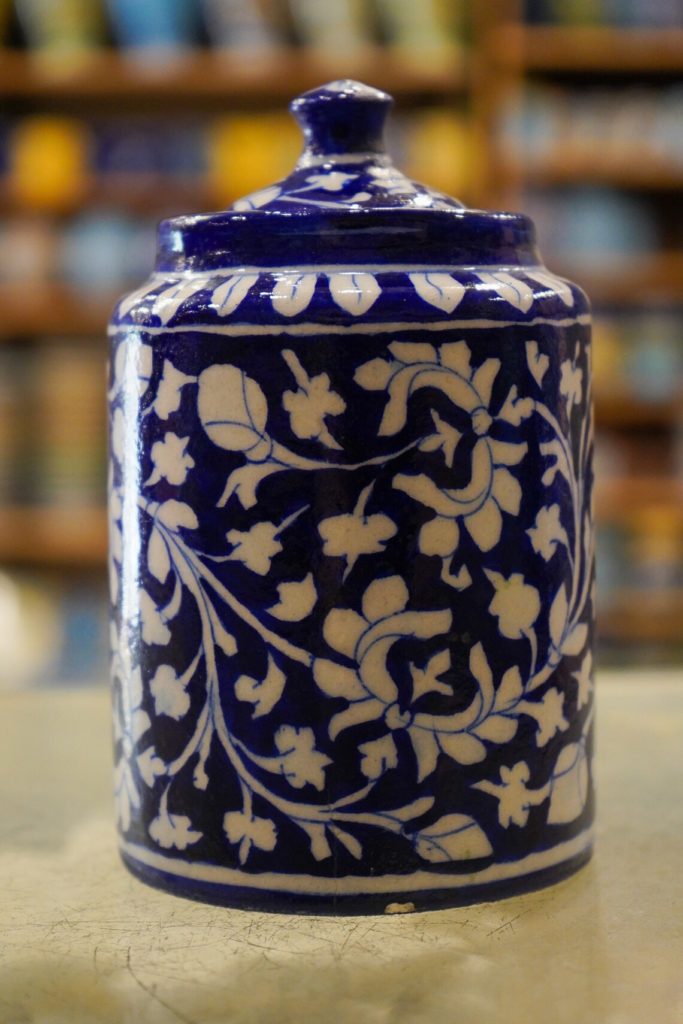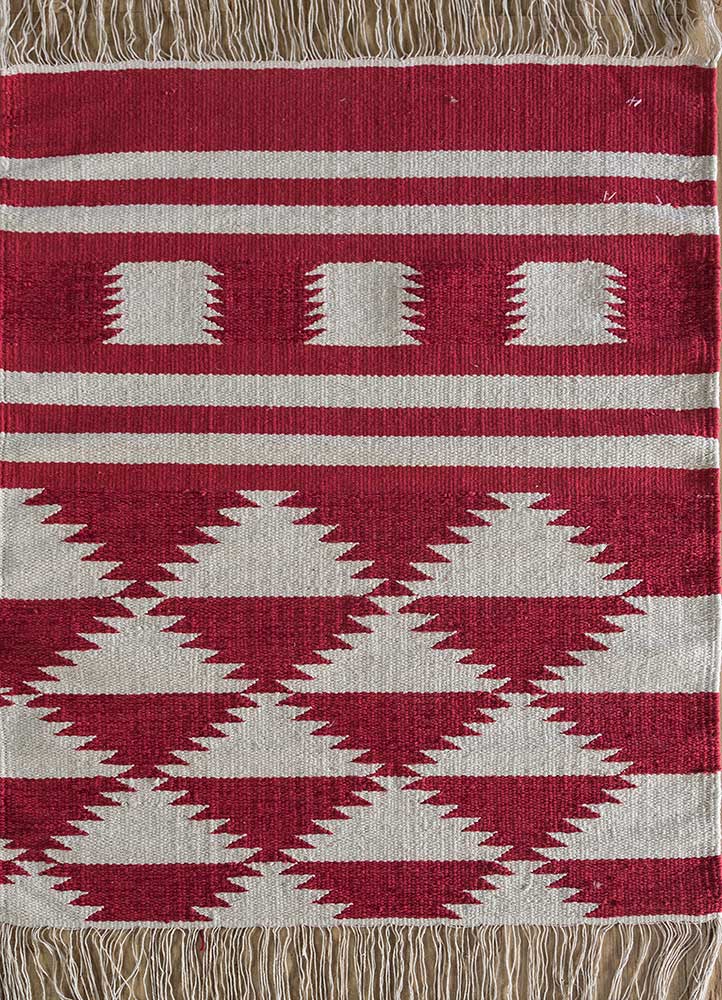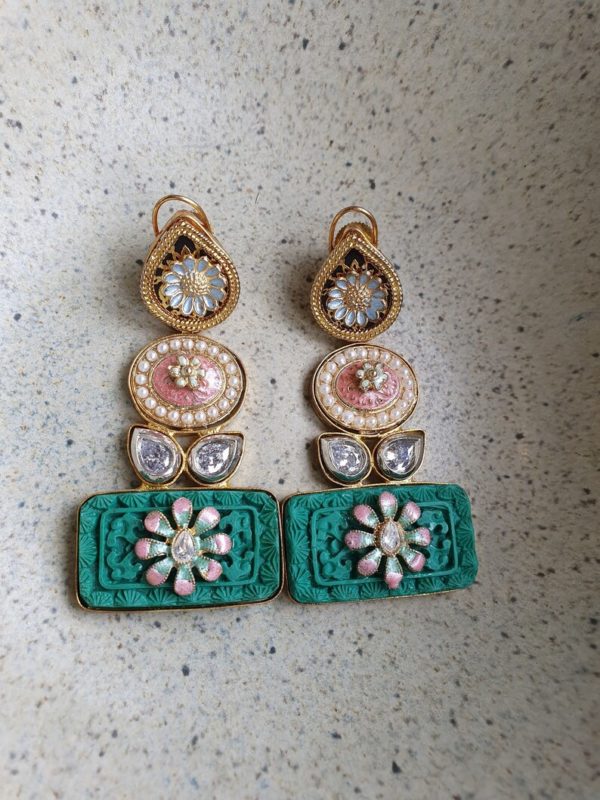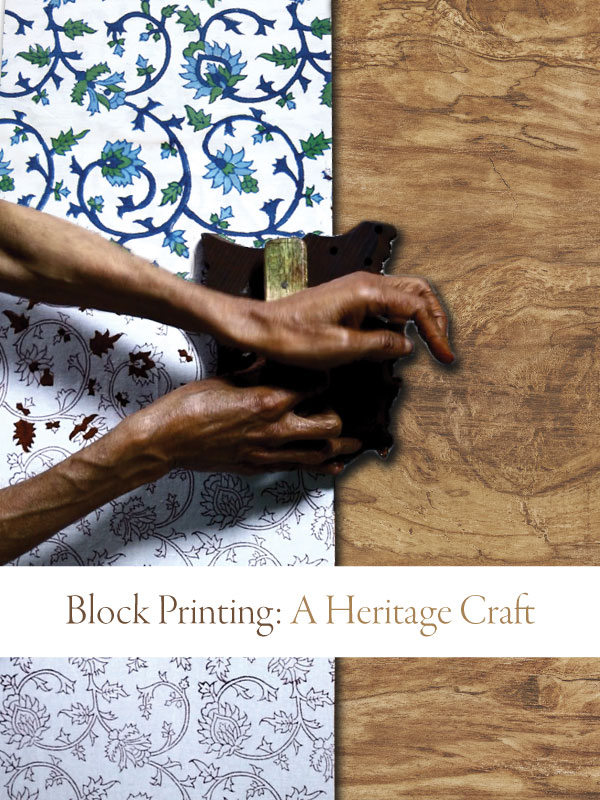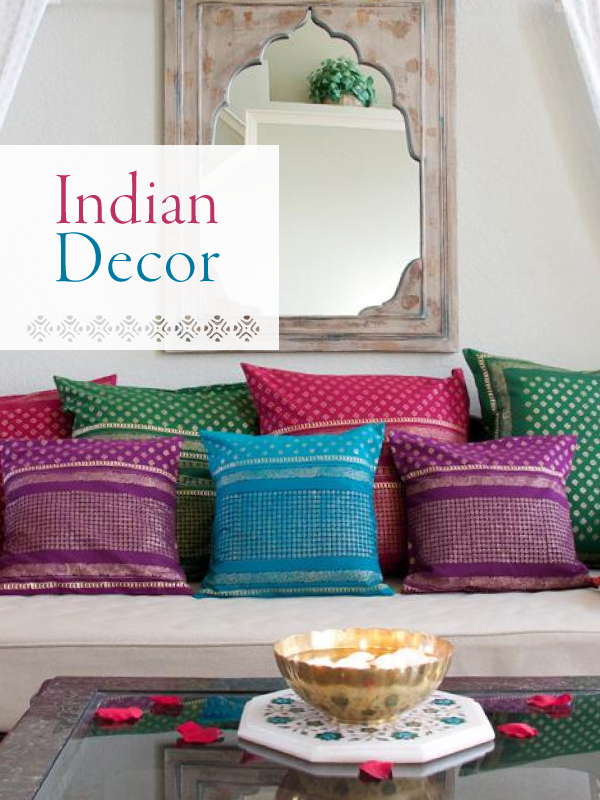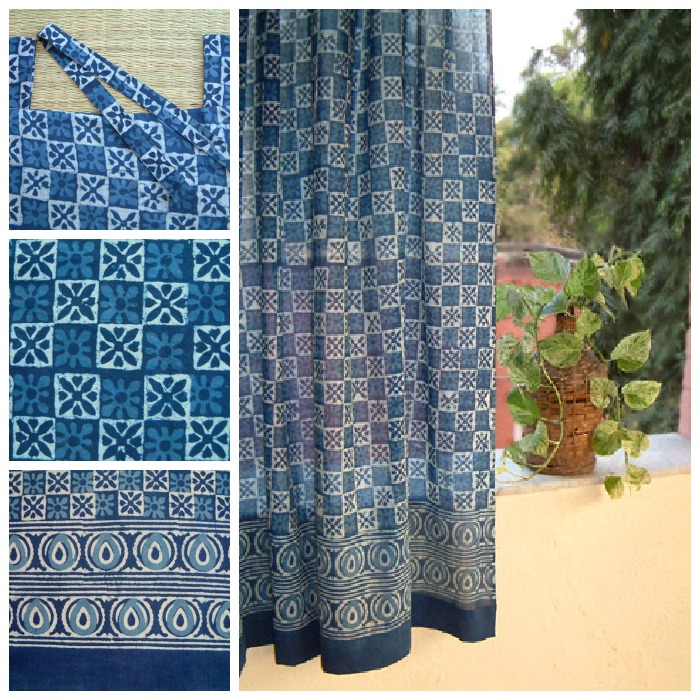The crafts of India are as vast and vibrant as the country itself. Given that, we’ll take a quick peek behind the curtain to learn more about Indian crafts. Consider this guide as your passport to the bazaars and markets of India!
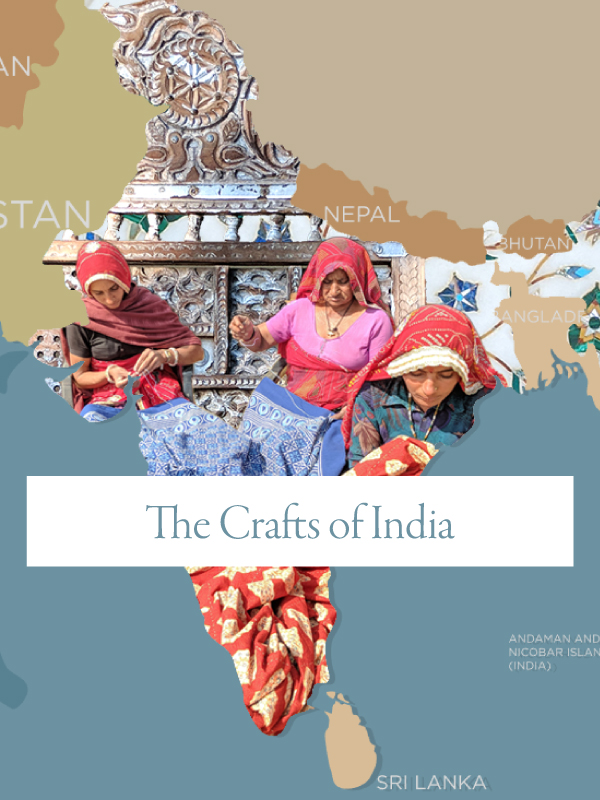
Crafts of India: Traditional Rajasthani Handicrafts
There are countless traditional handicrafts throughout India. (This doesn’t come as a surprise when you consider the immense population and physical size of the country!) In other words, someone could write an entire encyclopedia on the myriad crafts of India, truly. Today, however, we simply wish to introduce you to the traditional Indian arts and crafts of the desert state of Rajasthan.
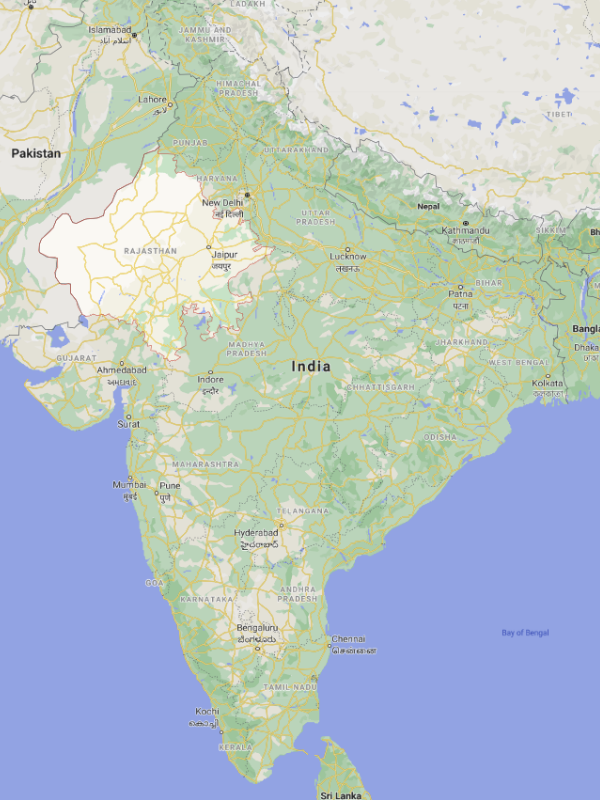
Why Rajasthan? For starters, our block printing studios are located in Sanganer, a town just about ten miles outside of Jaipur, which is Rajasthan‘s capital. Jaipur–the birthplace of Indian block printing–brims with markets and bazaars filled with stunning handcrafted, artisanal goods.
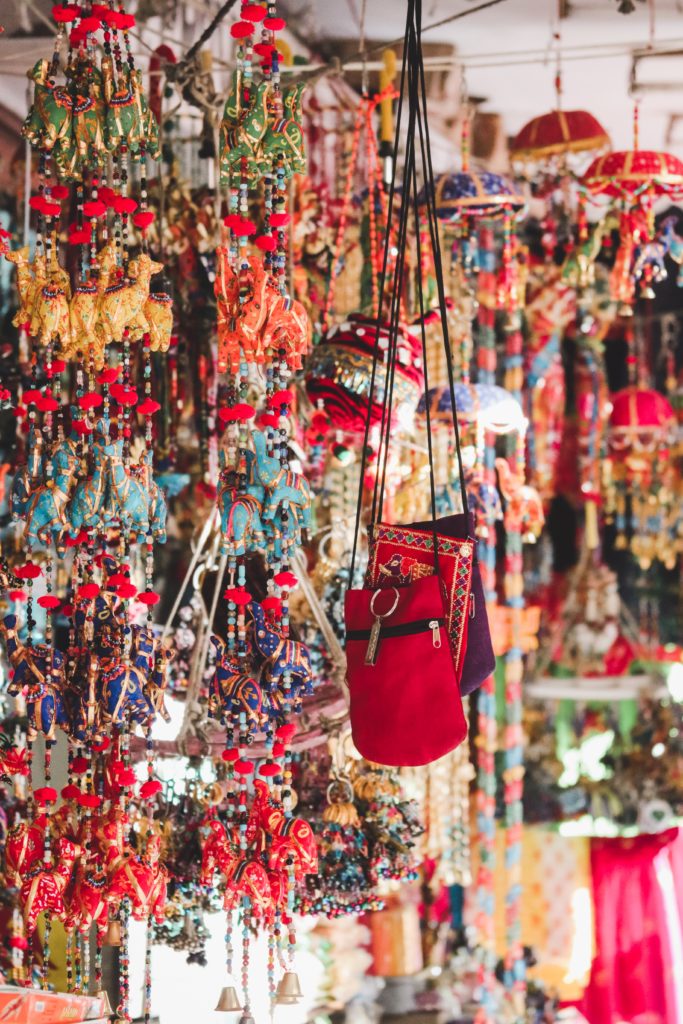
Jaipur’s block prints
Block printing refers to the technique of pressing and stamping fabric with carved wooden blocks. This type of traditional Indian handicraft is sometimes called “hand blocked,” “woodblock printed” or “hand block printed.”
This is one of the most time-consuming and labor-intensive crafts of India. This art form is passed down through generations and communities. Did you know that each Saffron Marigold block printed fabric collection comes to life through the hands and talents of our studio artisans?
Blue pottery
Around the world, people frequently associate hand painted, cobalt blue pottery with Jaipur, but did you know that the brilliant blue pottery actually has its roots in Persia? It came to India during the Mughal reign and remains one of the traditional Indian arts and crafts. Pieces of blue pottery typically depict ‘motifs’ reflective of the landscape and culture of Rajasthan.
Here’s a fun fact: blue pottery isn’t made of clay! Instead, potters use ground quartz as the base for the dough. They then incorporate other ingredients (such as powdered glass, gum, and water).
Artists hand paint each piece with cobalt oxide, which is what gives the pottery its blue color. Next, they’re glazed and enter the kiln for firing. This process helps to make the pottery free from cracks and render it impenetrable.
Crafts of India: carpet weaving
You might associate carpet weaving with the Middle East, but did you know that carpet weaving has ancient roots in India? The making of dhurries–thick, flat woven rugs–has a long tradition in Rajasthan. Made entirely by hand, Rajasthani dhurries feature a tight weave, which not only creates reversible patterns but also provides durability.
Common materials for dhurries include cotton, wool, and jute. In addition, dhurries usually feature vibrant colors and geometric patterns. They’re also washable, which is an excellent added bonus.
Silver filigree
Silver filigree is an ancient metal technique across different cultures; however, it’s been a part of traditional Indian art and culture for hundreds of years. This is another craft that came to India through the spice route, and it requires attention and precision.
Filigree appears everywhere from jewelry to decorative items like trays, mirrors, and vases. Sometimes you’ll find the inclusion of lac or gemstones; you may see botanical motifs or floral patterns. You can recognize silver filigree from its woven lace-like silver wires.
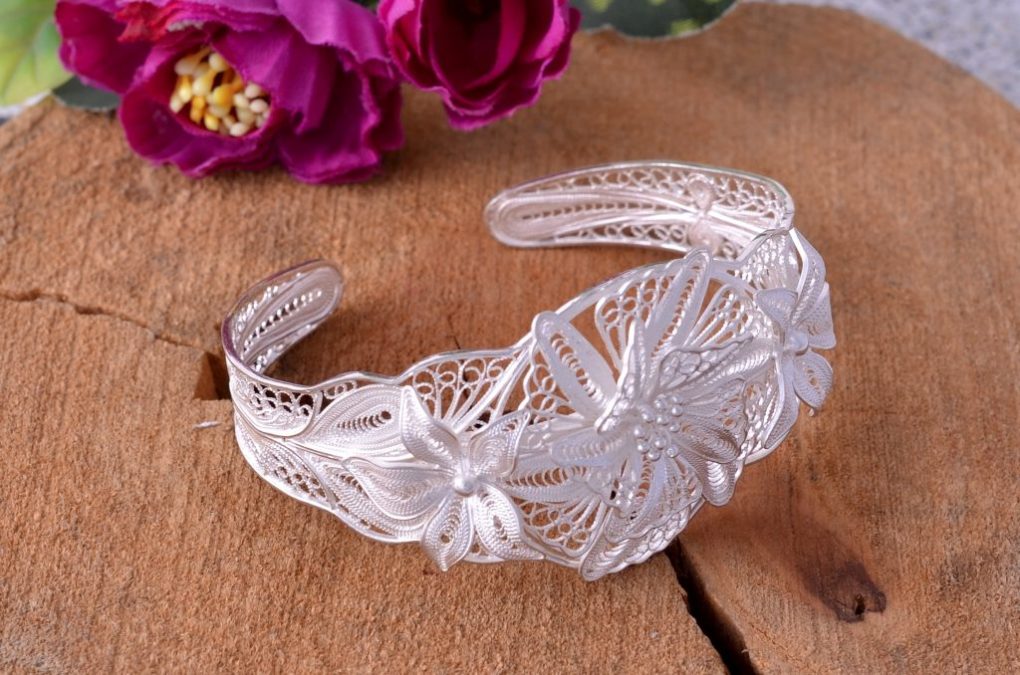
The marble crafts of India
The marble inlay work on the Taj Mahal is one of India’s grandest examples of pietra dura. Coming from the Italian words for “hard stone,” this decorative art form is known as parchin kari in India. Unlike mosaic art, this centuries-old craft uses gemstones cut into specifics shapes and sizes. That is to say that having specific colors and pieces are essential to carrying out the artist’s design.
The chiseling of the marble helps hold the gemstones together; the stones can interlock and fit into place seamlessly. The floral designs found in the arches of the Taj Mahal inspired our Moonlit Taj collection of block printed textiles.
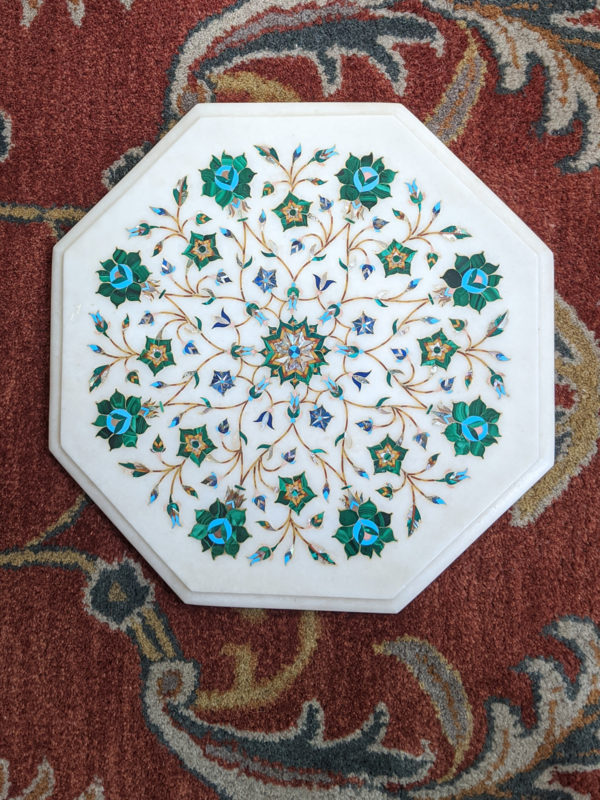
The metal art of thewa
Thewa is a particular kind of jewelry making that originated in Rajasthan. The Rajasthani word thewa translates into “setting,” which is an accurate name for this special handicraft. You’ll recognize thewa by the multicolored, vivid pieces of glass suspended within delicate embossed gold.
The craft is tedious; the designs intricate. In fact, it takes nearly a month for an artisan to complete just one piece.
Wood carving, a traditional craft of India
Certainly the art of wood carving enjoys a presence around the world. Still, there are certain things that distinguishes Indian wood carving. For starters, many Indian woods (such as shesham, sandalwood, teak, mango, and rosewood) provide an ideal canvas for intricate carving.
Patterns appear on meticulously carved wood in Rajasthani architecture. The famous carved doors in the palaces of Rajasthan exemplify this rich tradition. Carved objects carry an array of motifs from gods and goddesses to peacocks, camels, parrots, and elephants.
Along with stained and natural wood carvings, you’ll also find painted furniture and chairs with woven seats throughout Rajasthan.
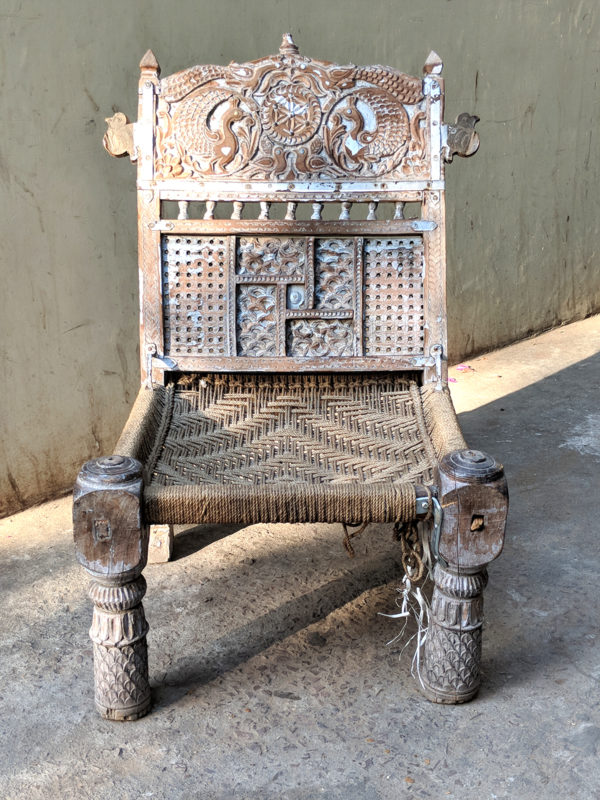
Puppets from Rajasthan
If you happen to visit the Jaipur during a festival, then you’ll find yourself enjoying a traditional puppet show. The string puppet theatre–known as kathputli–originated in Rajasthan over a thousand years ago. These string marionettes are carved from mango wood, stuffed with cotton, and hand painted.
Puppeteers create characters like snake charmers and court dancers and dress them in traditional costumes. The puppeteers then choregraph a play filled with dances and songs to share the history and legends of Rajasthan.
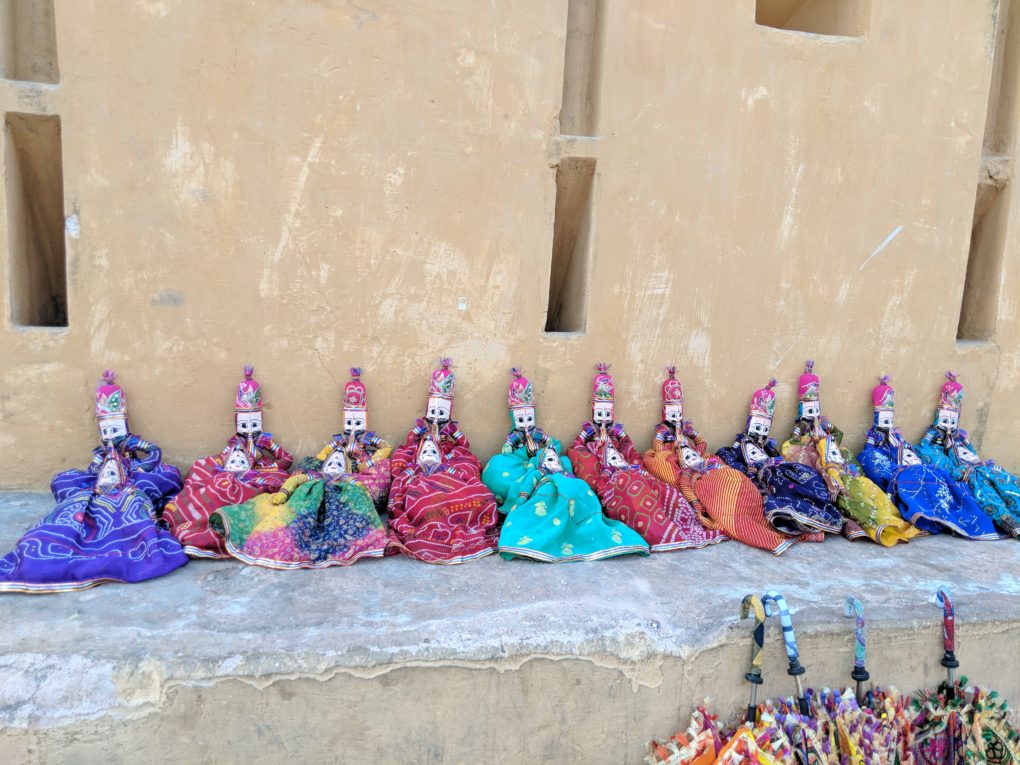
Embroidery
Naturally, we recognize that people around the world enjoy embroidery as a hobby or vocation. But what makes Indian embroidery different, then? Artisans employ embroidery as a decorative way to enhance a special textile. From using metallic threads to creating distinct patterns, hand embroidery is an essential livelihood for artisans in Rajasthan.
The tradition of fine stitching carries in with artisans who embroider garments, quilts, and fabrics. They create geometrical patterns with a double running stitch. In so doing, the embroidery is visible from both sides of a textile, which imparts another level of interest and color.
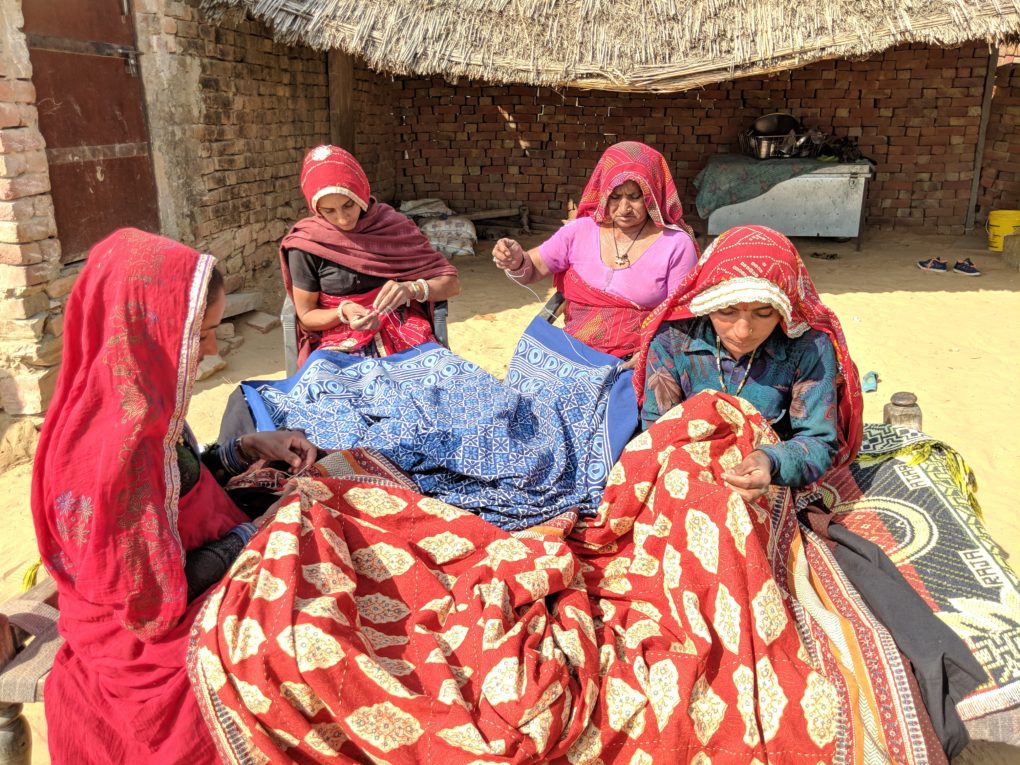
Leatherware crafts of India
Rajasthan is famous for producing jutti, which are the the pointy toed, backless slip-on shoe that populates booths in bazaars and markets. Crafted from camel hide, this type of leather footwear becomes heavily embellished with embroidery and beads.People throughout northern Indian commonly wear juttis for special occasions (like weddings). However, you can most definitely wear these shoes on a daily basis if you wish!
Did you know that you can’t find a jutti for your left foot (or for your right)? That’s right–there isn’t a shoe designated for left or right. Instead, the shoes will settle into the shape of your foot over time.
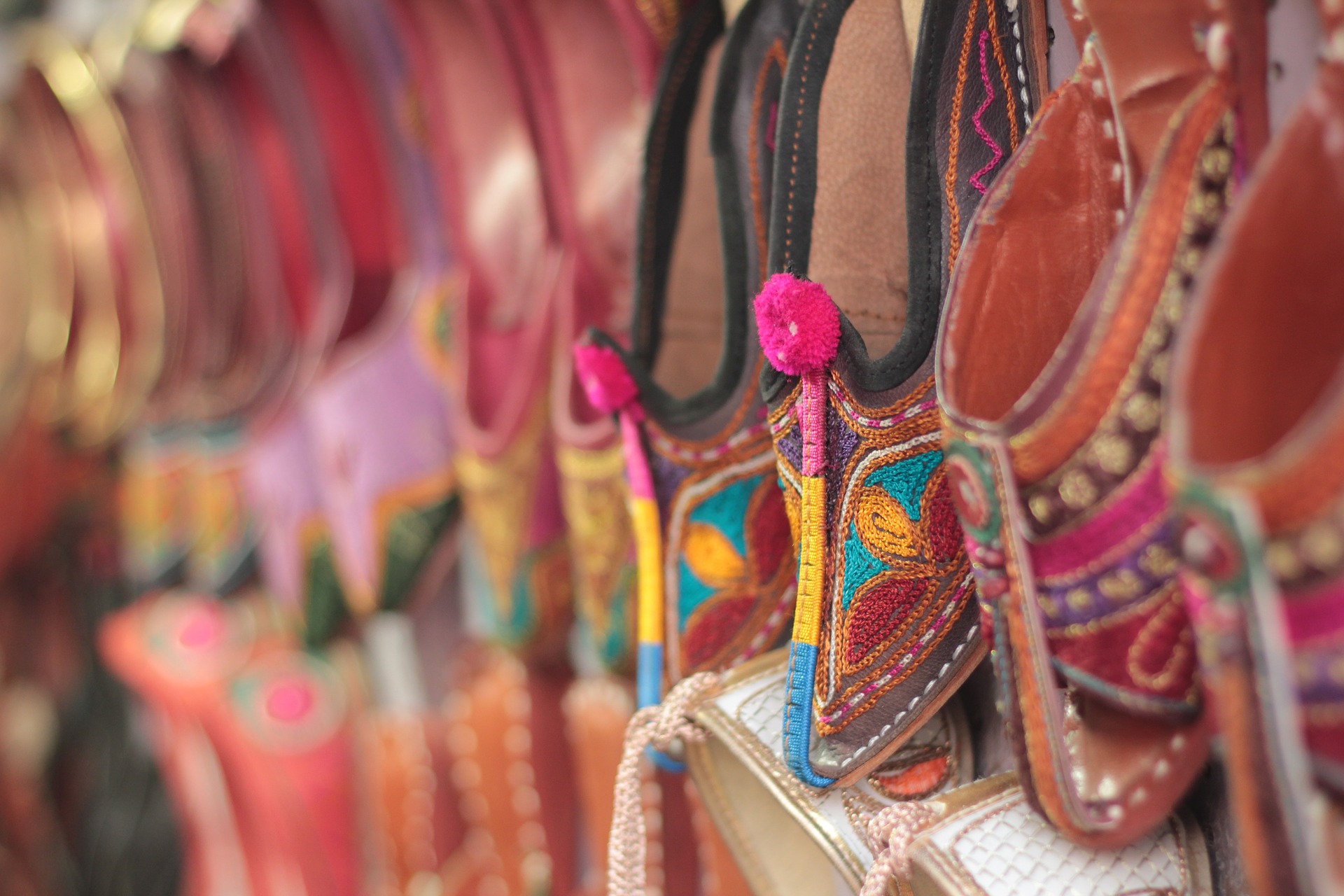
We hope you’ve enjoyed learning about the traditions of making Rajasthani handicrafts. The artisans who craft these goods pass along their skills and knowledge to the next generation. Clearly, this is what makes so many of the crafts of India heritage-rich.
Above all, by purchasing these handmade goods, you help keep the tradition alive. We’re doing our part, too, with our committment o the fair trade movement. Learn more about who we support and why we focus on block print linens here.


